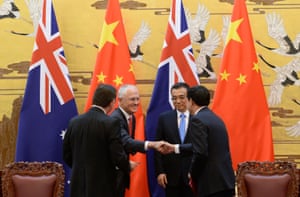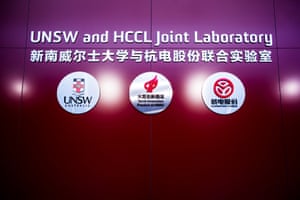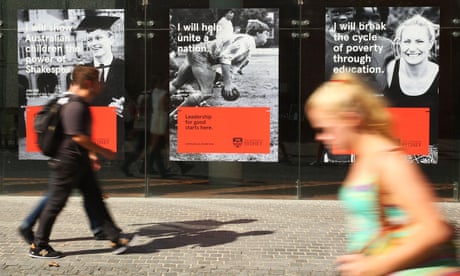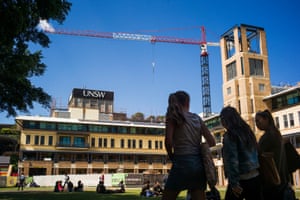by Ganesh Sahathevan

Najib claims Dr M paid lobbyist ‘millions’ to arrange meeting with
George Bush – Malaysia Today
It started with this from PM Najib:
"I want to tell you, when he was prime minister, he wanted to see President (George W) Bush.
"I want to tell you tonight that he paid lobbyists millions of ringgit," Najib told a thousand-strong crowd that greeted him at the Bunga Raya Complex near KLIA tonight.
Najib claimed that Mahathir had approached Hong Kong-based lobbyist Ken Schiffer to set up his meeting with Bush.
"Mahathir used the late Megat Junid as his main planner.
"And how did he pay? Using TNB coal contracts," the prime minister said.
Najib's man Raja Petra Kamaruddin (RPK) has now added:
What happened was Mahathir asked his very close crony-confidante to incorporate a Malaysian company and place it under the name of certain proxies. This newly incorporated company then negotiated to sell a coal-mine in Indonesia to TNB. An agreement was made between the Malaysian crony-company and PT Dasa Eka Jasatama (DEJ) and TNB was instructed to buy that Indonesian coal-mine for US$68 million.
TNB then paid a 10% deposit or US$6.8 million for the coal-mine, after which they took a loan from Standard Chartered Bank in London for the balance 90%.
It was from the profit of this coal-mine deal that the Americans were paid to arrange the meeting between Mahathir and President Bush.
That he is referring to Noble Group of Hong Kong, among others,is not difficult to determine,given reports of this sort which are easily located:
What happened was Mahathir asked his very close crony-confidante to incorporate a Malaysian company and place it under the name of certain proxies. This newly incorporated company then negotiated to sell a coal-mine in Indonesia to TNB. An agreement was made between the Malaysian crony-company and PT Dasa Eka Jasatama (DEJ) and TNB was instructed to buy that Indonesian coal-mine for US$68 million.
TNB then paid a 10% deposit or US$6.8 million for the coal-mine, after which they took a loan from Standard Chartered Bank in London for the balance 90%.
It was from the profit of this coal-mine deal that the Americans were paid to arrange the meeting between Mahathir and President Bush.
That he is referring to Noble Group of Hong Kong, among others,is not difficult to determine,given reports of this sort which are easily located:
Standard Chartered Bank (SCB) and Noble Trade Finance (NTF) have completed a five-year US$68mn pre-export financing deal that enables Tenaga Nasional Berhad(TNB) Coal International Ltd of Malaysia to acquire Indonesian coal mine company PT Dasa Eka Jasatama (DEJ). This guarantees TNB access to four concessionary coalmine areas in South Kalimantan.
END
References
It Cost TNB US$115 Million For Mahathir To Meet Bush
 By MT Webmaster Last updated Sep 23, 2017
By MT Webmaster Last updated Sep 23, 2017
Mahathir might tell you he sometimes forgets what he did in the past or he was not aware of what people below him did. But he definitely remembers this Indonesian coal-mine deal because he personally instructed his crony-confidante to set up the company to front the deal. And he personally knows the proxies that were used in this company plus he personally called the TNB Chairman to instruct them to buy the coal-mine for US$68 million and to pay a 10% deposit.
THE CORRIDORS OF POWER
Raja Petra Kamarudin
Tun Dr Mahathir Mohamad said he did not instruct anyone to pay anything for him to meet President Bush back in 2002. Other reports say Mahathir paid US$1.2 million for that meeting while The Age of Australia says it was $1.6 million Australian. The truth is it cost Tenaga Nasional Berhad (TNB) US$115 million or about RM482 million for Mahathir’s meeting with Bush. But they dressed it up as if it was a business deal to make it appear above board.
What happened was Mahathir asked his very close crony-confidante to incorporate a Malaysian company and place it under the name of certain proxies. This newly incorporated company then negotiated to sell a coal-mine in Indonesia to TNB. An agreement was made between the Malaysian crony-company and PT Dasa Eka Jasatama (DEJ) and TNB was instructed to buy that Indonesian coal-mine for US$68 million.
TNB then paid a 10% deposit or US$6.8 million for the coal-mine, after which they took a loan from Standard Chartered Bank in London for the balance 90%. The loan was obtained from a UK bank to make sure that the details do not leak to members of the Malaysian opposition, as is normally the case – and then people like Rafizi Ramli and Tony Pua will start broadcasting it to all and sundry.
It was from the profit of this coal-mine deal that the Americans were paid to arrange the meeting between Mahathir and President Bush.
TNB lost US$66.24 million on the coal-mine operation and five years later they sold it off for US19.5 million, thus losing another US$48.5 million. That comes to a total of US$114.74 million or RM482 million, all because Mahathir wanted to meet President Bush.
So, Mahathir says he never instructed anyone to pay for him to meet President Bush. But he did instruct his closest crony-confidante to incorporate a company under the names of proxies and he did instruct TNB to buy a coal-mine in Indonesia. And, from the profit they made from selling this Indonesian coal-mine to TNB, they paid the Americans millions to arrange a meeting between Mahathir and President Bush.
This Indonesian coal-mine fiasco is no secret and everyone in TNB knows about it but no one will talk about it openly except through whispers in the corridors. The TNB Board of Directors was not happy about the deal but they were overruled by someone ‘high up’ from the Prime Minister’s Office back in 2001.
Initially some within TNB’s management spoke out about venturing into a business that they know very little about. Then there was the issue of price (whether the coal-mine was overpriced) plus viability (whether there is enough coal to sustain the operation). The viability and returns on investment (ROI) needed to be studied before TNB forks out close to a quarter billion ringgit.
TNB decided to sell off the Indonesian coal-mine after losing US$66.24 million over five years and then lost another US$48.5 million when they sold it
The TNB Board, however, was told that the matter was not open for discussion because the decision to buy that Indonesian coal-mine was made at the highest level and it was more or less a fait accompli. The job of TNB’s Board was merely to approve the whole transaction with no objections or questions asked.
That decision was eventually going to cost TNB almost half a billion ringgit in losses and all Malaysia received in return was a meeting between Mahathir and President Bush. Yes, almost RM500 million for a short meeting in the White House does not sound like a good return on investment, does it?
Mahathir might tell you he sometimes forgets what he did in the past or he was not aware of what people below him did. But he definitely remembers this Indonesian coal-mine deal because he personally instructed his crony-confidante to set up the company to front the deal. And he personally knows the proxies that were used in this company plus he personally called the TNB Chairman to instruct them to buy the coal-mine for US$68 million and to pay a 10% deposit.
Standard Chartered Bank (SCB) and Noble Trade Finance (NTF) have completed a five-year US$68mn pre-export financing deal that enables Tenaga Nasional Berhad(TNB) Coal International Ltd of Malaysia to acquire Indonesian coal mine company PT Dasa Eka Jasatama (DEJ). This guarantees TNB access to four concessionary coalmine areas in South Kalimantan.
TNB Coal International Limited (TNBC) is a company incorporated in Mauritius, 70% owned by TNB. It is a special purpose vehicle set up by TNB to acquire coalmine companies. As an exchange, TNBC will obtain exclusive mining and marketing rights to produce and sell coal.
The margin is six-month Libor + 2.25%. Underwriting commitments are: Standard Chartered Bank with US$23mn; Noble Trade Finance US$20mn; Bumiputra-Commerce Bank Ltd with US$15mn; RHB Bank with US$10mn.
To meet the syndication schedule, NTF decided to transfer the target market to Malaysia, in particular to Malaysian banks that had offshore branches in Labuan. Noble believed Malaysian banks already have rich market knowledge towards TNB, therefore they can save a lot of time from their due diligence work. This strategy proved correct. The primary market was successfully closed by four banks (two are Malaysian major banks). Each of participating banks shared a balanced portfolio of the total syndication amount. There are banks in Singapore and Hong Kong still interested in the deal. They have agreed to join the secondary market. Already two of them have committed to the secondary market. Once the loan drawdown is complete financial exposure will be transferred to the participating banks.
TNB is the largest electricity utility company in Malaysia with M$57.1bn in assets. By the end of 2002 it served about 5.8mn customers throughout the Peninsula, Sabah and Labuan. Tenaga is 70% owned by the Malaysian government, which ensures its electric generation strategies are consistent with national policy. It is considered quasi-sovereign as board members of TNB including representatives from the Ministry of Finance and Ministry of Energy, Telecommunications and Multimedia.
TNB has a monopolistic position in electricity transmission and distribution in Peninsular Malaysia as it accounted for around 66% of Malaysia’s electric generating capacity. Around 60% of its fuel mix for electricity generation is derived from natural gas. The rest of the main fuel mix is represented by 14% of Hydro, 6% of oil and 16% of coal. TNB’s major supplier of natural gas is Petronas, the Malaysian national oil company that continues to supply TNB with natural gas at a subsidised rate. However on numerous occasions, the Malaysian government has refused Petronas application for waiving the gas supply subsidy. As TNB has failed since 1997 to raise electricity tariffs, it could immediately justify an increase in prices if the subsidy is cancelled. An increase in electricity prices could destabilise growth in the economy, especially in the manufacturing sector as it represents 25% of GDP. Highly aware of this scenario, the Malaysian government fully supports TNB to reduce its dependency upon Petronas and search for alternative fuel sources.
Earlier this year, the Malaysian and Indonesian governments concluded an agreement to allow TNB to purchase Indonesian coal. TNB set up a vehicle company TNBC to acquire extensive marketing rights to produce and sell the coal via acquiring Indonesian company mining company PT Dasa Eka Jasatama (DEJ). The coal will be supplied to TNB’s electricity generation system thereby releasing pressure on tariff increases caused by the rise in the price of oil and natural gas.
NEI of Noble Group started to work with DEJ since 1997 by seeing the potential of its coalmine concessionary contracts. Noble Group’s strategy is to go downstream to hold extensive marketing rights of coalmines but not own the coalmine operations. To comply with Noble’s corporate strategy, NTF lends money to DEJ so that NEI can get the coal from DEJ’s mines. DEJ respects NTF’s specialty in structuring and financing coalmines.
When DEJ had been approached by TNB, DEJ did not want to cancel the supply contract with NEI. Therefore it included NEI as one of the off takers in the deal, furthermore DEJ recommended to mandate NTF to structure and arrange the deal with a group of primary banks. Based on the prior experience working with DEJ, the deal had been structured as an export backed term loan facility. NTF invited Standard Chartered Bank as a co-arranger. SCB is one of the world’s leading emerging markets bank with 150 years history; it is also Noble Groups main bank.
NTF, NEI and the structured finance team of SCB composed the information memorandum together. The deal was given to the syndication desk of SCB to sell. The initial strategy of SCB was to sell it in the Singapore market but it did not show quick results. Due to the complexity of the structure and professional requirements of the deal, the banks needed to spend a lot of time to understand the deal before completing their due diligence report.
References
It Cost TNB US$115 Million For Mahathir To Meet Bush
Mahathir might tell you he sometimes forgets what he did in the past or he was not aware of what people below him did. But he definitely remembers this Indonesian coal-mine deal because he personally instructed his crony-confidante to set up the company to front the deal. And he personally knows the proxies that were used in this company plus he personally called the TNB Chairman to instruct them to buy the coal-mine for US$68 million and to pay a 10% deposit.
THE CORRIDORS OF POWER
Raja Petra Kamarudin
Tun Dr Mahathir Mohamad said he did not instruct anyone to pay anything for him to meet President Bush back in 2002. Other reports say Mahathir paid US$1.2 million for that meeting while The Age of Australia says it was $1.6 million Australian. The truth is it cost Tenaga Nasional Berhad (TNB) US$115 million or about RM482 million for Mahathir’s meeting with Bush. But they dressed it up as if it was a business deal to make it appear above board.
What happened was Mahathir asked his very close crony-confidante to incorporate a Malaysian company and place it under the name of certain proxies. This newly incorporated company then negotiated to sell a coal-mine in Indonesia to TNB. An agreement was made between the Malaysian crony-company and PT Dasa Eka Jasatama (DEJ) and TNB was instructed to buy that Indonesian coal-mine for US$68 million.
TNB then paid a 10% deposit or US$6.8 million for the coal-mine, after which they took a loan from Standard Chartered Bank in London for the balance 90%. The loan was obtained from a UK bank to make sure that the details do not leak to members of the Malaysian opposition, as is normally the case – and then people like Rafizi Ramli and Tony Pua will start broadcasting it to all and sundry.
It was from the profit of this coal-mine deal that the Americans were paid to arrange the meeting between Mahathir and President Bush.
TNB lost US$66.24 million on the coal-mine operation and five years later they sold it off for US19.5 million, thus losing another US$48.5 million. That comes to a total of US$114.74 million or RM482 million, all because Mahathir wanted to meet President Bush.
So, Mahathir says he never instructed anyone to pay for him to meet President Bush. But he did instruct his closest crony-confidante to incorporate a company under the names of proxies and he did instruct TNB to buy a coal-mine in Indonesia. And, from the profit they made from selling this Indonesian coal-mine to TNB, they paid the Americans millions to arrange a meeting between Mahathir and President Bush.
This Indonesian coal-mine fiasco is no secret and everyone in TNB knows about it but no one will talk about it openly except through whispers in the corridors. The TNB Board of Directors was not happy about the deal but they were overruled by someone ‘high up’ from the Prime Minister’s Office back in 2001.
Initially some within TNB’s management spoke out about venturing into a business that they know very little about. Then there was the issue of price (whether the coal-mine was overpriced) plus viability (whether there is enough coal to sustain the operation). The viability and returns on investment (ROI) needed to be studied before TNB forks out close to a quarter billion ringgit.
TNB decided to sell off the Indonesian coal-mine after losing US$66.24 million over five years and then lost another US$48.5 million when they sold it
The TNB Board, however, was told that the matter was not open for discussion because the decision to buy that Indonesian coal-mine was made at the highest level and it was more or less a fait accompli. The job of TNB’s Board was merely to approve the whole transaction with no objections or questions asked.
That decision was eventually going to cost TNB almost half a billion ringgit in losses and all Malaysia received in return was a meeting between Mahathir and President Bush. Yes, almost RM500 million for a short meeting in the White House does not sound like a good return on investment, does it?
Mahathir might tell you he sometimes forgets what he did in the past or he was not aware of what people below him did. But he definitely remembers this Indonesian coal-mine deal because he personally instructed his crony-confidante to set up the company to front the deal. And he personally knows the proxies that were used in this company plus he personally called the TNB Chairman to instruct them to buy the coal-mine for US$68 million and to pay a 10% deposit.
Noble and StanChart complete Indonesian coal deal
ASIA / 08-10-03 / BY
Standard Chartered Bank (SCB) and Noble Trade Finance (NTF) have completed a five-year US$68mn pre-export financing deal that enables Tenaga Nasional Berhad(TNB) Coal International Ltd of Malaysia to acquire Indonesian coal mine company PT Dasa Eka Jasatama (DEJ). This guarantees TNB access to four concessionary coalmine areas in South Kalimantan.
TNB Coal International Limited (TNBC) is a company incorporated in Mauritius, 70% owned by TNB. It is a special purpose vehicle set up by TNB to acquire coalmine companies. As an exchange, TNBC will obtain exclusive mining and marketing rights to produce and sell coal.
The margin is six-month Libor + 2.25%. Underwriting commitments are: Standard Chartered Bank with US$23mn; Noble Trade Finance US$20mn; Bumiputra-Commerce Bank Ltd with US$15mn; RHB Bank with US$10mn.
To meet the syndication schedule, NTF decided to transfer the target market to Malaysia, in particular to Malaysian banks that had offshore branches in Labuan. Noble believed Malaysian banks already have rich market knowledge towards TNB, therefore they can save a lot of time from their due diligence work. This strategy proved correct. The primary market was successfully closed by four banks (two are Malaysian major banks). Each of participating banks shared a balanced portfolio of the total syndication amount. There are banks in Singapore and Hong Kong still interested in the deal. They have agreed to join the secondary market. Already two of them have committed to the secondary market. Once the loan drawdown is complete financial exposure will be transferred to the participating banks.
TNB is the largest electricity utility company in Malaysia with M$57.1bn in assets. By the end of 2002 it served about 5.8mn customers throughout the Peninsula, Sabah and Labuan. Tenaga is 70% owned by the Malaysian government, which ensures its electric generation strategies are consistent with national policy. It is considered quasi-sovereign as board members of TNB including representatives from the Ministry of Finance and Ministry of Energy, Telecommunications and Multimedia.
TNB has a monopolistic position in electricity transmission and distribution in Peninsular Malaysia as it accounted for around 66% of Malaysia’s electric generating capacity. Around 60% of its fuel mix for electricity generation is derived from natural gas. The rest of the main fuel mix is represented by 14% of Hydro, 6% of oil and 16% of coal. TNB’s major supplier of natural gas is Petronas, the Malaysian national oil company that continues to supply TNB with natural gas at a subsidised rate. However on numerous occasions, the Malaysian government has refused Petronas application for waiving the gas supply subsidy. As TNB has failed since 1997 to raise electricity tariffs, it could immediately justify an increase in prices if the subsidy is cancelled. An increase in electricity prices could destabilise growth in the economy, especially in the manufacturing sector as it represents 25% of GDP. Highly aware of this scenario, the Malaysian government fully supports TNB to reduce its dependency upon Petronas and search for alternative fuel sources.
Earlier this year, the Malaysian and Indonesian governments concluded an agreement to allow TNB to purchase Indonesian coal. TNB set up a vehicle company TNBC to acquire extensive marketing rights to produce and sell the coal via acquiring Indonesian company mining company PT Dasa Eka Jasatama (DEJ). The coal will be supplied to TNB’s electricity generation system thereby releasing pressure on tariff increases caused by the rise in the price of oil and natural gas.
NEI of Noble Group started to work with DEJ since 1997 by seeing the potential of its coalmine concessionary contracts. Noble Group’s strategy is to go downstream to hold extensive marketing rights of coalmines but not own the coalmine operations. To comply with Noble’s corporate strategy, NTF lends money to DEJ so that NEI can get the coal from DEJ’s mines. DEJ respects NTF’s specialty in structuring and financing coalmines.
When DEJ had been approached by TNB, DEJ did not want to cancel the supply contract with NEI. Therefore it included NEI as one of the off takers in the deal, furthermore DEJ recommended to mandate NTF to structure and arrange the deal with a group of primary banks. Based on the prior experience working with DEJ, the deal had been structured as an export backed term loan facility. NTF invited Standard Chartered Bank as a co-arranger. SCB is one of the world’s leading emerging markets bank with 150 years history; it is also Noble Groups main bank.
NTF, NEI and the structured finance team of SCB composed the information memorandum together. The deal was given to the syndication desk of SCB to sell. The initial strategy of SCB was to sell it in the Singapore market but it did not show quick results. Due to the complexity of the structure and professional requirements of the deal, the banks needed to spend a lot of time to understand the deal before completing their due diligence report.











